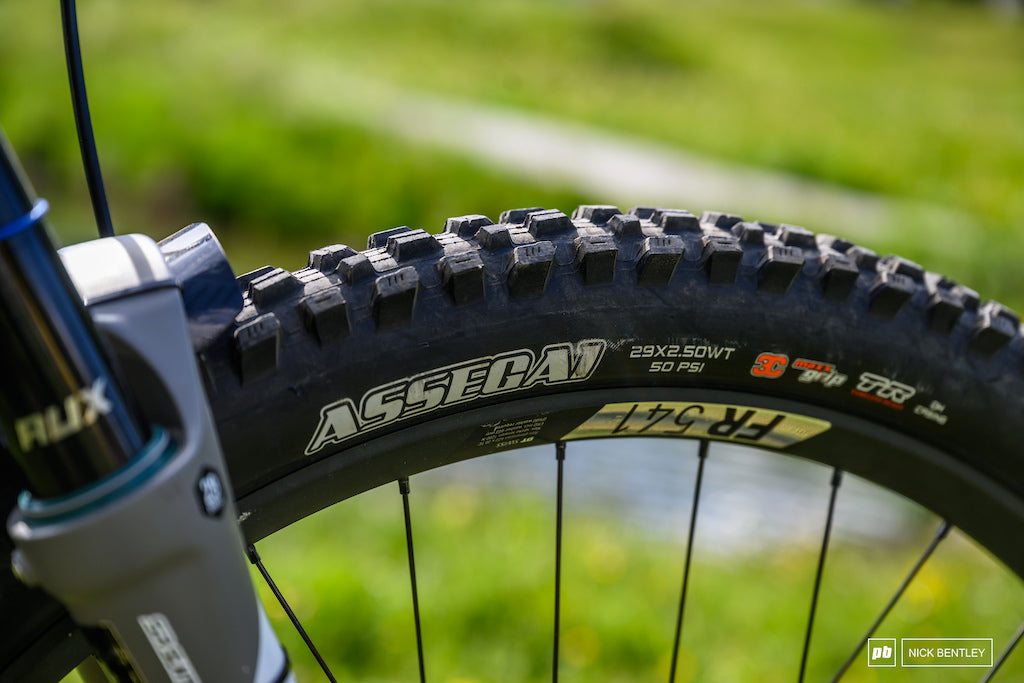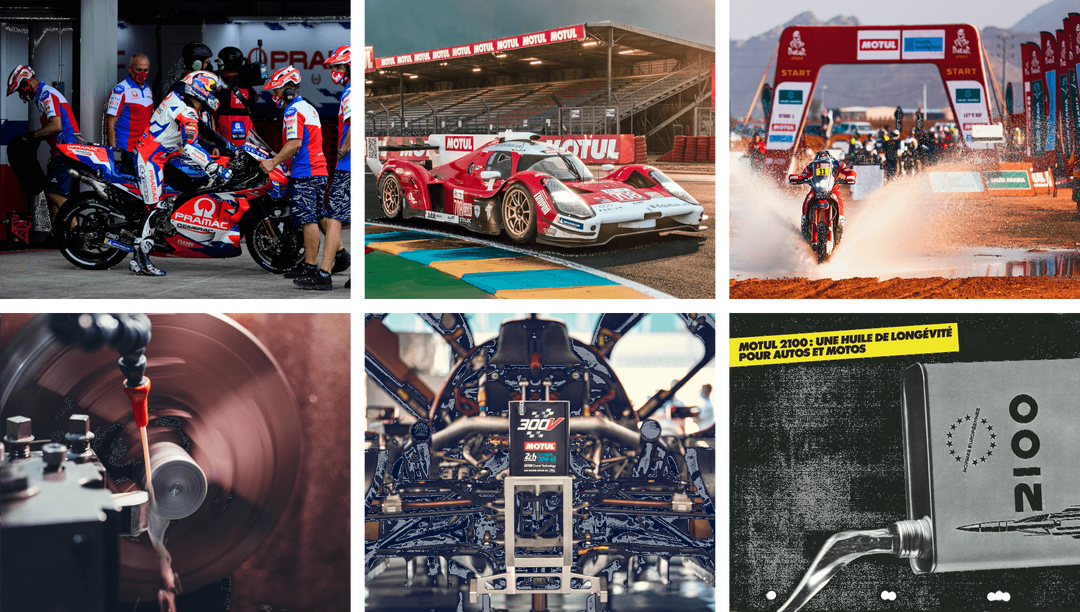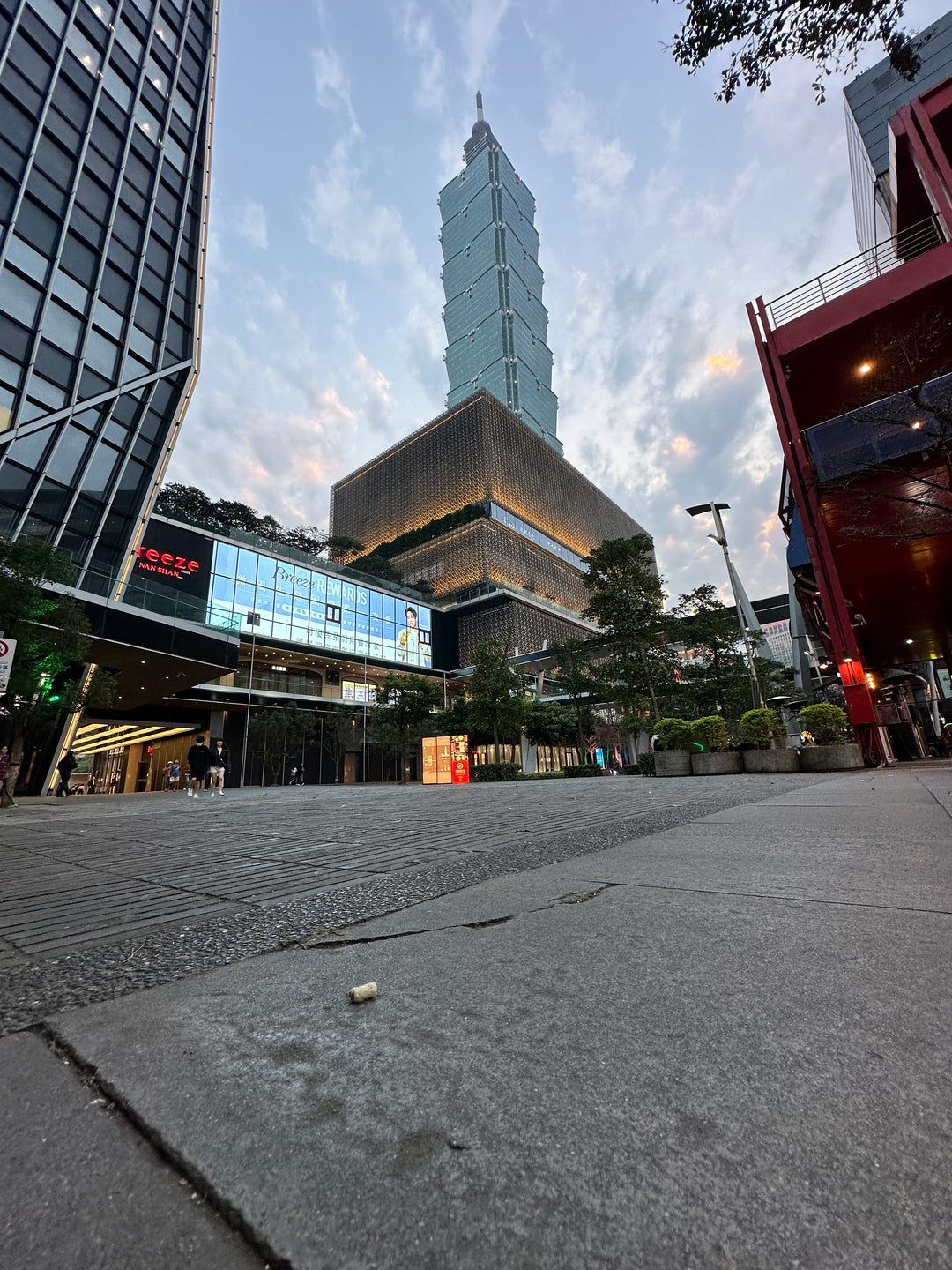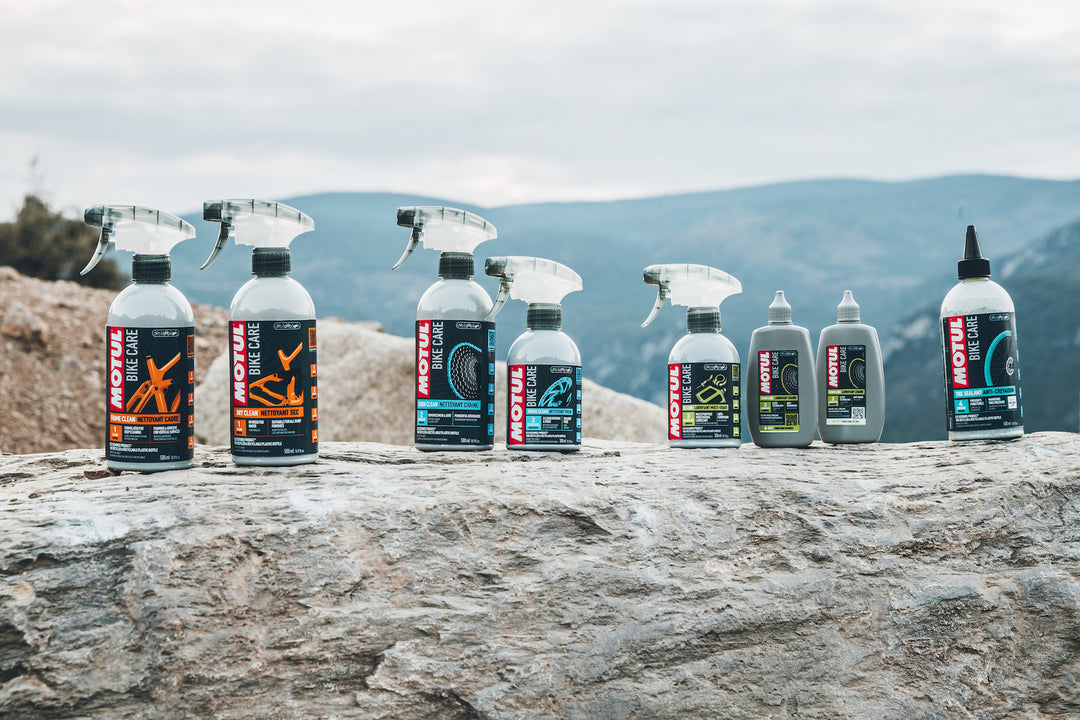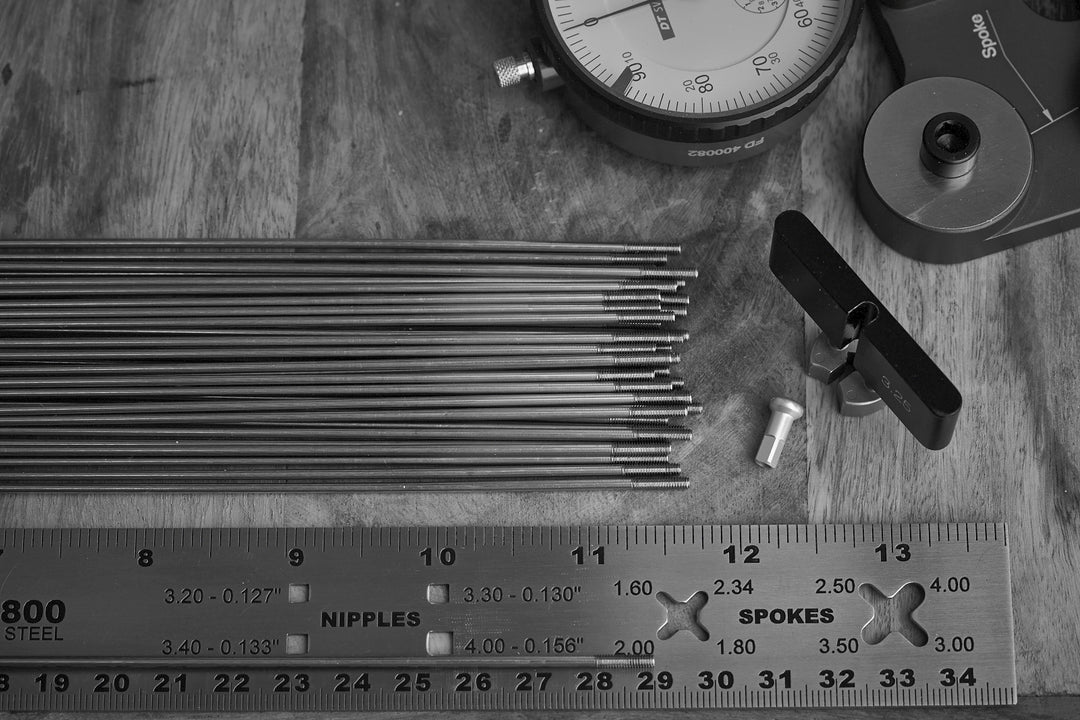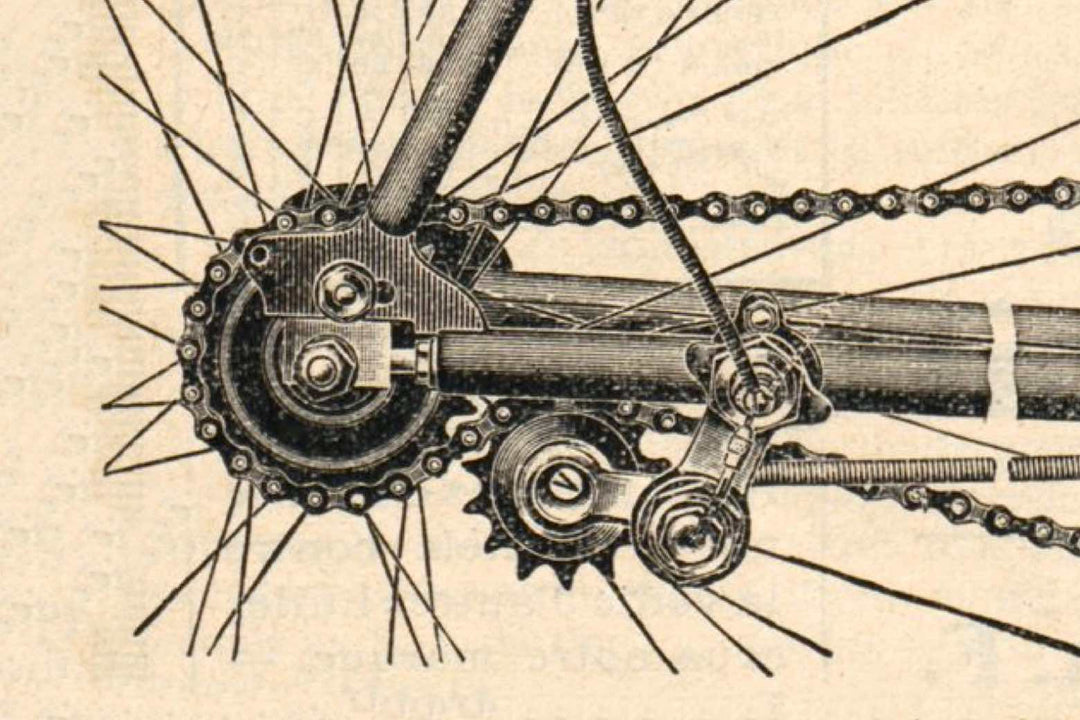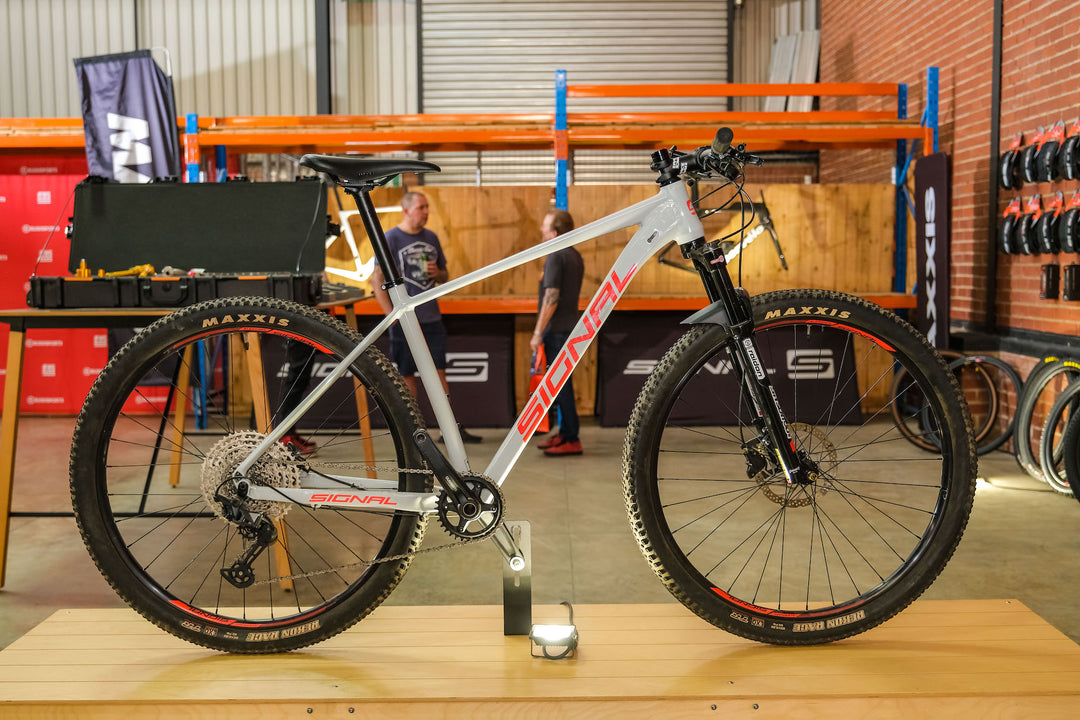We couldn't talk downhill tyres without speaking to the one brand that has become synonymous with the sport: Maxxis. Maxxis' range of DH tyres has helped riders grace the podium for what seems like forever. In fact, I'm pretty sure that not a round goes by without a Maxxis rider being on the podium in either juniors or elite World Cup racing.
We headed out into the World Champs pits to find Chris Yates from Maxxis to talk about downhill tyres from the brand's point of view. Then we spoke to Lee Huskinson, Laurie Greenland's mechanic, and finally, Sam Blenkinsop, to get a rider's point of view.

 Downhill and Maxxis are probably a pretty synonymous combination. What are your most used downhill tyres these days?
Downhill and Maxxis are probably a pretty synonymous combination. What are your most used downhill tyres these days?
Probably the key combination is always going to be an Assegai front and a DHR II rear. A really great combination of a really predictable tyre with that Assegai on the front. Good in multiple conditions, good on all sorts of surfaces. And yeah, just tend to be a really, really nice predictable tyre. And then the benefits of the DHR on the rear, we've got quite a sort of paddle design to the tread pattern, which gives you both good consistent braking and good acceleration at the same time, with a decent sort of rolling resistance and still quite an aggressive side knob as well when you do get into the turns. Yeah, that's quite a key combination and there tends to be MaxxGrip, predominantly on the front with a DH casing, of course, so dual layers are 60 TPI, so you get that nice solid feel to the tire and then potentially a MaxxTerra, but quite a lot will still run a MaxxGrip in the rear as well, again with a DH casing.
 We're predicted rain here at Fort William. Is there a big performance window for that classic Assegai / DHR II combination before riders have to move to a Shorty?
We're predicted rain here at Fort William. Is there a big performance window for that classic Assegai / DHR II combination before riders have to move to a Shorty?
I think it will also depend on not just saturation of the course, but probably also how those new sections are holding up. We've been told that a lot of those new sections are quite soft. Actually, if that's the case, then yes, Shorty would be quite useful for biting through that soft stuff because it's not just a wet weather tire. It's also if you get incredible amounts of dust, it will bite through dust as well. The interesting point will be that crossover when it becomes that, whether you're going to get any claggy mud in that sort of woods section as well, that will dictate whether they start to use this because it does clear mud fantastically well, the tread pattern itself is quite wide-spaced, which lends itself to that. These little raised sections between the major knobs as well, and the idea with those is that they don't allow the mud to stick, and when you get a vibration to the tire they will actually help to shake clear some of the mud at the same time.

 Is cutting tyres something you support the riders with?
Is cutting tyres something you support the riders with?
Yeah, I mean, that tends to come down to individual mechanics as well as to how they're cut and how much they take off.
 Do you have any top tips for people at home to look after their tyres and set them up?
Do you have any top tips for people at home to look after their tyres and set them up?
Yeah, it is quite often horses for courses. It comes down to, in some ways, suspension setup as well, how they like to run those, whether they're running an insert at the same time and it is a very personal thing. I think the best thing you can do is invest in a digital pressure gauge. Take that with you on a ride and experiment with different things. Obviously, higher pressure, you're going to have fewer pinch punctures. Higher pressure as well is also going to lend itself to not having to use an insert. However, when you get particularly wet and claggy conditions, if you're riding a lot of rooty stuff, those pressures are going to come down. As a minimum, because we don't actually list minimums, I would say a minimum you're at around 18 psi without an insert. Then maximums, 50 psi, we've heard certain riders who run up into the 30s. But in terms of looking after your tyres, probably that minimum pressure is the crucial one there.

 What tyres does Laurie run most of the time?
What tyres does Laurie run most of the time?
Generally he's riding DHR 2s front and rear and 2.4s rather than 2.5s. We prefer the narrow option and a 3C MaxxGrip. They're super tacky numbers.
 Nothing crazy going on, pretty much a standard tyre you could buy, right?
Nothing crazy going on, pretty much a standard tyre you could buy, right?
Yeah, just the standard tyre. We do have like an extra insert you can put in which is not production, but it's just to stop thorns coming through really. But every now and then we do switch out to a standard DH casing that is just slightly lighter.
 Pressures wise, do you change them up a lot? Fort William is real rocky, does he go up in pressure here?
Pressures wise, do you change them up a lot? Fort William is real rocky, does he go up in pressure here?
Generally speaking, our pressures remain the same nearly everywhere, it's very rare that we change. So if it's real bike parky somewhere like Leogang, it's got a lot of high speed turns, we might up the pressures a bit because you just roll the tyre a bit more. If you're searching for grip, like you are here at Fort William, although there's a lot of rocks, there's a lot of small bumps and stuff, you need the tyre to deform and do its job and deflect out the way of stuff so pressures are actually fairly low for us.

 So DHR II's are his normal tyre. Do you use gut feeling when to change the tyre when it gets too muddy?
So DHR II's are his normal tyre. Do you use gut feeling when to change the tyre when it gets too muddy?
Generally, Laurie's really good at riding mud on dry tyres so it takes a really bad day for him to switch out to a Shorty or a Wetscream. Yeah, somewhere that's really muddy generally in the woods a lot more, often if it rained badly, we'd switch out to a Shorty. If it was just a little bit of rain and a bit of a mixed conditions, some hard pack dry stuff in the open some slick stuff in the woods we would maybe Assegai up front just to gain you a little bit of confidence there.
 No messing around with cutting tyres then?
No messing around with cutting tyres then?
We do cut Wetscreams. I'm quite a big fan. Yeah, at Les Gets a couple of years back cut back Wet Screams were the choice. I don't mind it, it brings back a bit of a throwback to what I raced, yeah we were forever cutting tyres. A set of cut Wet Screams go pretty hard really.
 Any kind of top tips for people at home for setting up tyres, tubeless, that kind of thing?
Any kind of top tips for people at home for setting up tyres, tubeless, that kind of thing?
Not really, just stick to the recommendations. I know some rims you might need to put an extra layer of rim tape on, just to get them to seat well, but yeah, generally speaking like 100ml of sealant in the back, 60ml in the front. Don't like too much sealant in the tyre at any time. But probably also don't put too much bike wash on them all the time, I think it perishes them a bit. Some of those cleaners can be pretty corrosive out there. So watch out. Rubber perishes after a little while so don't be riding on ancient tires, even if someone's doing you a good deal on some tires that have been stored for a couple of years I'd avoid it.
 What combination of Maxxis do you ride most of the time?
What combination of Maxxis do you ride most of the time?
Every time I pretty much run Assegai front and back, 29 and then today I've just tried the DHR on the rear.

 Do you run any different tyre pressures than usual here?
Do you run any different tyre pressures than usual here?
I've gone up 1psi front and back, so I'm normally 23psi front and 26psi back, but I'm on 24psi and 27psi now
 Any inserts?
Any inserts?
Inserts front and back.
 Same tire width for you front and back?
Same tire width for you front and back?
Yeah, 2.5" front and rear for me.
 Casings-wise, do you change them up or are you DH casings consistently?
Casings-wise, do you change them up or are you DH casings consistently?
Yeah, DH casings all the time with the downhill bike, only for the trail bike do I Double Down. On the e-bike same downhill casing and it just doesn't squirm or anything. It feels good and supportive.
Article first published on pinkbike.com


